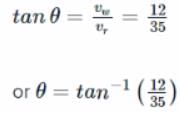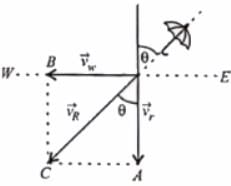NEET Exam > NEET Tests > Test: Addition & Subtraction of Vectors - Graphical Method (NCERT) - NEET MCQ
Test: Addition & Subtraction of Vectors - Graphical Method (NCERT) - NEET MCQ
Test Description
5 Questions MCQ Test - Test: Addition & Subtraction of Vectors - Graphical Method (NCERT)
Test: Addition & Subtraction of Vectors - Graphical Method (NCERT) for NEET 2025 is part of NEET preparation. The Test: Addition & Subtraction of Vectors - Graphical Method (NCERT) questions and answers have been prepared
according to the NEET exam syllabus.The Test: Addition & Subtraction of Vectors - Graphical Method (NCERT) MCQs are made for NEET 2025 Exam.
Find important definitions, questions, notes, meanings, examples, exercises, MCQs and online tests for Test: Addition & Subtraction of Vectors - Graphical Method (NCERT) below.
Solutions of Test: Addition & Subtraction of Vectors - Graphical Method (NCERT) questions in English are available as part of our course for NEET & Test: Addition & Subtraction of Vectors - Graphical Method (NCERT) solutions in
Hindi for NEET course.
Download more important topics, notes, lectures and mock test series for NEET Exam by signing up for free. Attempt Test: Addition & Subtraction of Vectors - Graphical Method (NCERT) | 5 questions in 5 minutes | Mock test for NEET preparation | Free important questions MCQ to study for NEET Exam | Download free PDF with solutions
Test: Addition & Subtraction of Vectors - Graphical Method (NCERT) - Question 1
Which of the following is not a property of a null vector?
Detailed Solution for Test: Addition & Subtraction of Vectors - Graphical Method (NCERT) - Question 1
Test: Addition & Subtraction of Vectors - Graphical Method (NCERT) - Question 2
Given a + b + c + d = 0, which of the following statements is incorrect?
Detailed Solution for Test: Addition & Subtraction of Vectors - Graphical Method (NCERT) - Question 2
Test: Addition & Subtraction of Vectors - Graphical Method (NCERT) - Question 3
Two vectors A and B inclined at an angle θ have a resultant R which makes an angle α with A. If the directions of A and B are interchanged, the resultant will have the same
Detailed Solution for Test: Addition & Subtraction of Vectors - Graphical Method (NCERT) - Question 3
Test: Addition & Subtraction of Vectors - Graphical Method (NCERT) - Question 4
Three forces of magnitude 6 N, 6 N and √72 N act as a corner of a cube along three sides as shown in fig. Resultant of these forces is

Detailed Solution for Test: Addition & Subtraction of Vectors - Graphical Method (NCERT) - Question 4
Test: Addition & Subtraction of Vectors - Graphical Method (NCERT) - Question 5
Rain is falling vertically with a speed of 35ms−1. Winds starts blowing after sometime with a speed of 12ms−1 in east to west direction. At what angle with the vertical should a boy waiting at a bus stop hold his umbrella to protect himself from rain?
Detailed Solution for Test: Addition & Subtraction of Vectors - Graphical Method (NCERT) - Question 5
Information about Test: Addition & Subtraction of Vectors - Graphical Method (NCERT) Page
In this test you can find the Exam questions for Test: Addition & Subtraction of Vectors - Graphical Method (NCERT) solved & explained in the simplest way possible.
Besides giving Questions and answers for Test: Addition & Subtraction of Vectors - Graphical Method (NCERT), EduRev gives you an ample number of Online tests for practice
Download as PDF



 as shown in the figure. To protect himself from the rain the boy should hold his umbrella in the direction of resultant velocity
as shown in the figure. To protect himself from the rain the boy should hold his umbrella in the direction of resultant velocity  If θ is the angle which resultant velocity
If θ is the angle which resultant velocity  makes with the vertical, then
makes with the vertical, then












